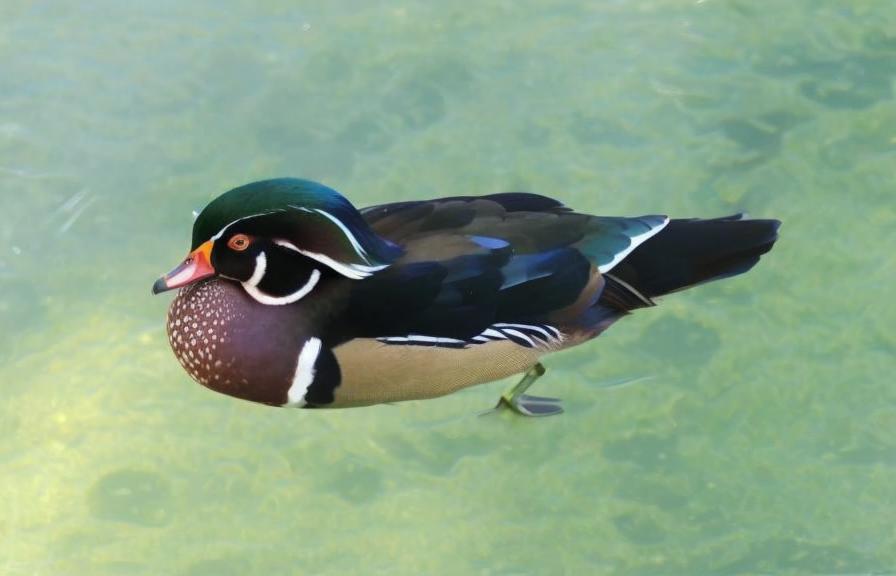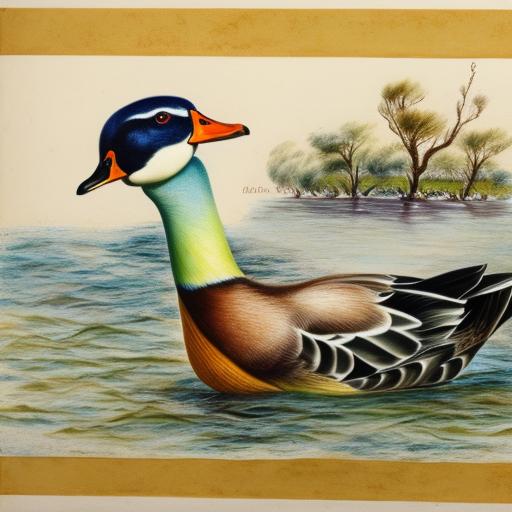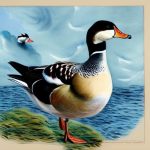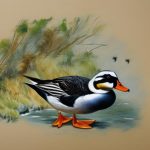Ducks are fascinating and diverse creatures, with a wide variety of breeds that have been developed for different purposes over the centuries. While some duck breeds are well-known and commonly found on farms and in backyard flocks, there are also rare duck breeds that are less common and in danger of extinction. These rare duck breeds often have unique characteristics, physical traits, and behaviors that make them valuable and worth preserving. In this article, we will explore the world of rare duck breeds, including their characteristics, history, conservation efforts, unique behaviors, and the challenges they face. We will also discuss how individuals can support and promote the preservation of rare duck breeds.
Key Takeaways
- Rare duck breeds are an important part of our agricultural heritage and contribute to genetic diversity in the poultry industry.
- Rare duck breeds often have unique physical traits such as feather coloration, size, and shape that set them apart from more common breeds.
- The history and origins of rare duck breeds can often be traced back to specific regions or countries, with each breed having its own unique story.
- Conservation efforts for rare duck breeds are crucial in order to prevent their extinction and preserve their genetic diversity for future generations.
- Rare duck breeds may exhibit unique behaviors and habits, such as foraging, nesting, and social interactions, that make them valuable for both conservation and agricultural purposes.
Characteristics and Physical Traits of Rare Duck Breeds
Rare duck breeds come in a wide range of sizes, shapes, and colors, each with its own unique set of physical traits. For example, the Silver Appleyard duck is a large, dual-purpose breed known for its striking silver and white plumage, while the Cayuga duck is a medium-sized breed with iridescent greenish-black feathers. Some rare duck breeds, such as the Swedish Blue duck, have distinct color patterns that set them apart from more common breeds. In addition to their appearance, rare duck breeds often have specific characteristics that make them valuable for different purposes. For example, the Welsh Harlequin duck is prized for its excellent egg-laying abilities, while the Aylesbury duck is known for its succulent meat. Understanding the unique physical traits and characteristics of rare duck breeds is essential for their preservation and promotion.
Rare duck breeds also exhibit a wide range of behaviors and habits that make them interesting and valuable to enthusiasts. For example, the Indian Runner duck is known for its upright posture and distinctive walking gait, while the Magpie duck is prized for its foraging abilities and adaptability to different environments. Some rare duck breeds, such as the Hook Bill duck, have unique bill shapes that set them apart from other breeds and contribute to their distinct behaviors. Understanding the behaviors and habits of rare duck breeds is important for their proper care and management, as well as for promoting their conservation and preservation.
History and Origins of Rare Duck Breeds
The history and origins of rare duck breeds are often closely tied to the development of agriculture and the domestication of ducks for various purposes. Many rare duck breeds have ancient origins, with some breeds being developed hundreds or even thousands of years ago. For example, the East Indies duck is believed to have originated in Southeast Asia and was brought to Europe by Dutch traders in the 17th century. Similarly, the Orpington duck was developed in England in the late 19th century by crossing various breeds to create a superior meat-producing duck. Understanding the history and origins of rare duck breeds can provide valuable insights into their unique characteristics and traits, as well as the cultural and historical significance of these breeds.
Conservation efforts for rare duck breeds are essential for ensuring their survival and promoting their continued existence. Many rare duck breeds are at risk of extinction due to factors such as habitat loss, genetic erosion, and competition from more common breeds. Conservation efforts for rare duck breeds often involve breeding programs, genetic diversity conservation, habitat restoration, and public education and outreach. Organizations such as the Livestock Conservancy and Rare Breeds Canada work to promote the conservation of rare duck breeds through advocacy, education, and support for breeders and enthusiasts. By supporting conservation efforts for rare duck breeds, individuals can help ensure that these unique and valuable breeds continue to thrive for future generations.
Unique Behaviors and Habits of Rare Duck Breeds
Rare duck breeds exhibit a wide range of unique behaviors and habits that make them fascinating and valuable to enthusiasts. For example, the Silver Appleyard duck is known for its calm and friendly disposition, making it a popular choice for backyard flocks and small farms. The Cayuga duck is prized for its excellent foraging abilities and adaptability to different environments, while the Swedish Blue duck is known for its gentle nature and good mothering instincts. Understanding the unique behaviors and habits of rare duck breeds is important for their proper care and management, as well as for promoting their conservation and preservation.
Challenges and Threats Facing Rare Duck Breeds
Rare duck breeds face a variety of challenges and threats that put them at risk of extinction. Habitat loss, genetic erosion, competition from more common breeds, and lack of public awareness are just a few of the factors that contribute to the decline of rare duck breeds. In addition, some rare duck breeds may be at risk due to their specific traits or characteristics not being valued in modern agricultural practices. For example, breeds that are not well-suited for intensive production systems or do not meet specific market demands may be at risk of being phased out in favor of more profitable or efficient breeds. Understanding the challenges and threats facing rare duck breeds is essential for developing effective conservation strategies and promoting their continued existence.
How to Support and Promote Rare Duck Breeds

There are several ways that individuals can support and promote rare duck breeds to ensure their conservation and preservation. One way to support rare duck breeds is by raising awareness about their unique characteristics, traits, and value. This can be done through educational outreach, public events, social media campaigns, and other forms of advocacy. Another way to support rare duck breeds is by participating in breeding programs or conservation initiatives aimed at preserving genetic diversity and promoting sustainable management practices. By supporting breeders who raise rare duck breeds and purchasing products from these breeds, individuals can help promote their continued existence and economic viability. Additionally, individuals can support organizations that work to conserve rare duck breeds through donations, volunteer work, or advocacy efforts. By taking these actions, individuals can play a crucial role in ensuring that rare duck breeds continue to thrive for future generations.
If you’re interested in rare duck breeds, you might also want to explore the world of chicken coops and nesting boxes. Understanding the importance of a well-designed coop and nest box is crucial for the health and well-being of your poultry. Check out this informative article on PoultryWizard to learn more about creating the ideal living space for your feathered friends.
FAQs
What are rare duck breeds?
Rare duck breeds are types of ducks that are not commonly found and are considered to be less common than popular duck breeds such as the Pekin or Mallard.
Why are rare duck breeds important?
Rare duck breeds are important for genetic diversity and conservation efforts. They often have unique traits and characteristics that can be valuable for breeding programs and maintaining the overall health of duck populations.
What are some examples of rare duck breeds?
Examples of rare duck breeds include the Silver Appleyard, Cayuga, Saxony, and Swedish Blue. These breeds are not as widely known or kept as pets or for commercial purposes.
How can rare duck breeds be preserved?
Rare duck breeds can be preserved through breeding programs, conservation efforts, and education about the importance of maintaining genetic diversity in duck populations. This can involve efforts to increase awareness and interest in these breeds, as well as supporting breeders who work to maintain and promote rare duck breeds.
Where can I find rare duck breeds?
Rare duck breeds can often be found through specialty breeders, conservation organizations, and poultry shows or exhibitions. It’s important to research and connect with reputable sources to ensure the health and well-being of the ducks.
Meet Walter, the feathered-friend fanatic of Florida! Nestled in the sunshine state, Walter struts through life with his feathered companions, clucking his way to happiness. With a coop that’s fancier than a five-star hotel, he’s the Don Juan of the chicken world. When he’s not teaching his hens to do the cha-cha, you’ll find him in a heated debate with his prized rooster, Sir Clucks-a-Lot. Walter’s poultry passion is no yolk; he’s the sunny-side-up guy you never knew you needed in your flock of friends!







